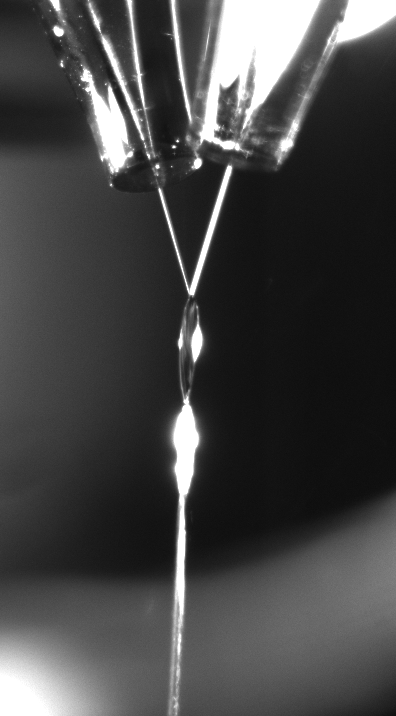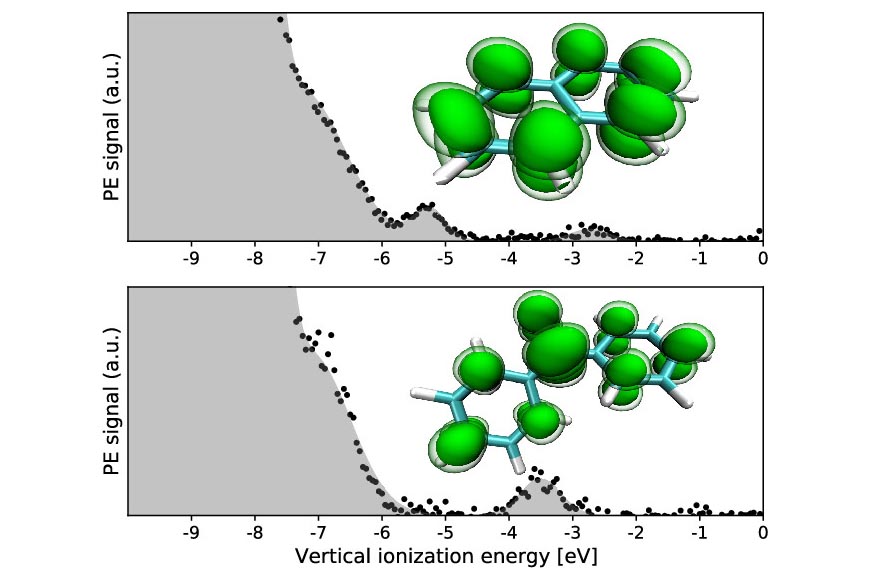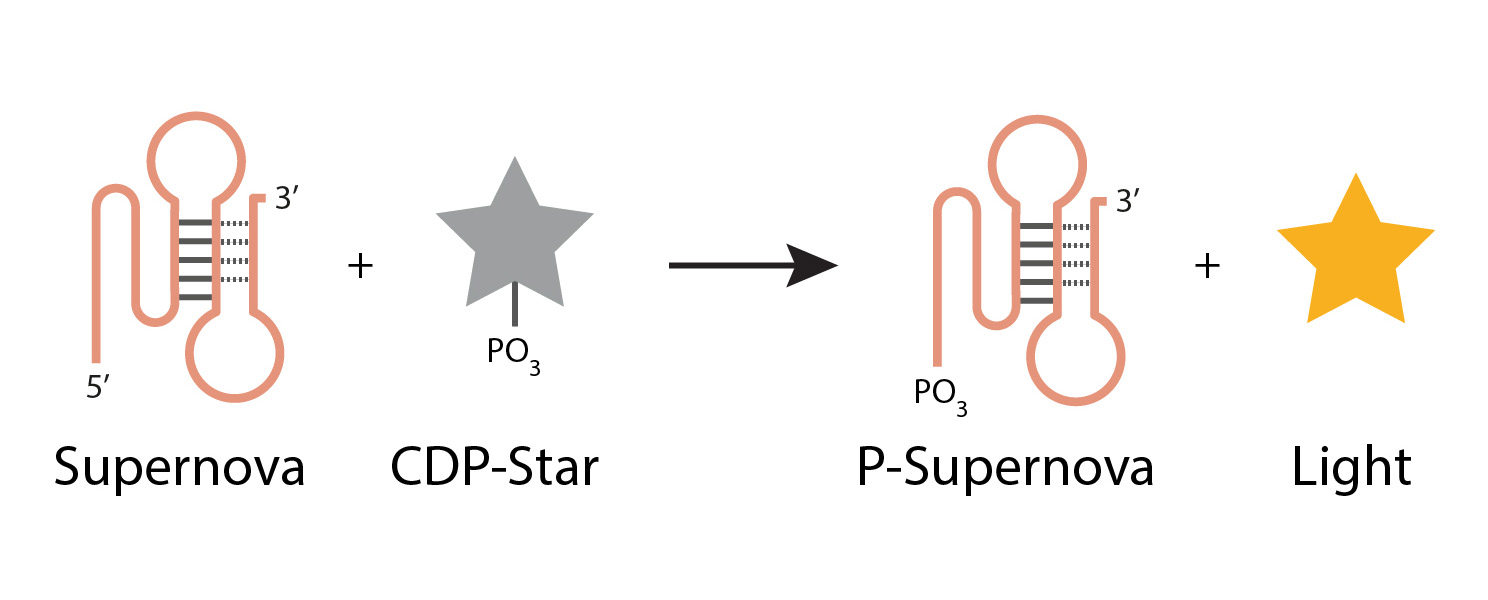
Many experiments require a planar liquid surface; thus, scientists have been developing different techniques to stably produce so-called liquid flat-jets in laboratories. The applications are typically used to study liquid-phase phenomena such as evaporation dynamics and attosecond-pulse generation but also chemical or biological compounds in solution using X-ray or UV-vis absorption spectroscopies.
One common arrangement is to collide two cylindrical micro-jets of a liquid (see Figure 1). The result can be a chain of leaf-shaped structures – a so-called flat-jet – if the flow-rate of the individual jets fulfills the conditions of a laminar flow. The flat parts of these leaves are only a few micrometers thick while each leaf is bound by a relatively thick fluid rim and stabilized by surface tension, viscosity, and fluid inertia. At the point where the two cylindrical jets impinge, the two streams spread outwards while they remain to flow downstream. The surface tension counteracts the spreading such that the fluid merges in order to form the leaf shape.
"Having produced these leaf structures, it remained an open question if, how, and where the two solutions mix in the absence of turbulences. Do the solutions mix right when the two jets collide or is the laminar flow preserved, the fluids flow along with each other and mix downstream?" describes the main question Christian Schewe from Fritz-Haber Institute in Berlin and IOCB Prague.
To investigate this, the scientists within a collaboration – mainly between École Polytechnique Fédérale de Lausanne, Switzerland, and the Fritz-Haber Institute in Berlin, Germany – used the well-known luminol oxidation chemiluminescence reaction. By mixing an aqueous luminol solution in one jet with an aqueous peroxide solution in the second jet one can observe a blue glowing light being emitted where the two solutions mix (see Figure 2). The same reaction is also exploited by criminal investigators to detect traces of blood, as well as in biological research.
As shown in Figure 2, the researchers confirmed that a liquid-liquid interface remains throughout the first leaf rather than solutions that are mixed instantaneously since there is almost no glowing in the first leaf observed. This again enabled to study the reaction dynamics of the reactive species diffusing across the liquid-liquid interface under controlled conditions. There are some advantages of the flat-jet over existing methods: the free-flowing flat-jet is not perturbed by friction on container walls, it can be run in a vacuum and allows direct optical or mechanical access to the liquid.
"We believe this is a promising approach towards measuring chemical kinetics on the sub-millisecond timescale, a range that is very difficult to reach with currently existing technologies and to study fundamental dynamics at liquid-liquid interfaces," says Andreas Osterwalder, PI of the project.
The study was published in the Journal of the American Chemical Society.
Original article
Schewe, H. C.; Credidio, B.; Ghrist, A. M.; Malerz, S.; Ozga, C.; Knie, A.; Haak, H.; Meijer, G.; Winter, B.; Osterwalder, A. Imaging of Chemical Kinetics at the Water–Water Interface in a Free-Flowing Liquid Flat-Jet. J. Am. Chem. Soc. 2022, 144, 7790-7795. https://doi.org/10.1021/jacs.2c01232







